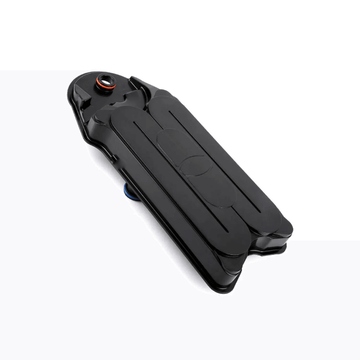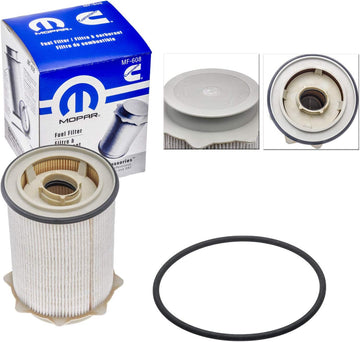Choosing the best oil filter for your car, truck, or SUV is one of the most important decisions in vehicle maintenance.
It’s not just about routine service — the right oil filter protects your engine from harmful particles, improves performance, and extends the life of your vehicle.
According to AAA, poor maintenance, including failing to replace oil filters on time, is a leading cause of engine failure in the U.S. Each year, American drivers spend over $3 billion on engine repairs that could have been prevented with proper filtration and timely oil changes.
In this guide, you’ll learn exactly how to choose the best oil filter for American driving conditions, whether you’re navigating snowy highways in Minnesota, desert heat in Arizona, or stop-and-go city traffic in New York.
1. Understand What an Oil Filter Does
An oil filter is a critical part of your engine’s oil filtration system. Its job is to trap dirt, sludge, and microscopic metal particles that naturally accumulate in motor oil.
Without a fuel filter:
-
Contaminants circulate through the engine
-
Friction and heat increase
-
Engine parts wear down faster
A quality oil filter helps to:
-
Maintain steady oil flow
-
Reduce engine friction
-
Extend the life of both oil and engine
-
Improve fuel efficiency
2. Match the Filter to Your Vehicle
Oil filters are vehicle-specific. The right one ensures proper fit, sealing, and filtration efficiency.
Always check:
-
Your vehicle’s owner’s manual
-
OEM (Original Equipment Manufacturer) part number
-
The recommended filter type for your engine size
Example:
If you own a 2024 Dodge Ram 1500 with a 5.7 HEMI, the Mopar MO-339 filter is an OEM match designed to handle the oil pressure and flow rate of that engine.
Using the wrong filter can lead to:
-
Oil leaks
-
Reduced filtration performance
-
Increased wear on internal components
3. Understand Oil Filter Types
American drivers have three main oil filter types to choose from:
-
Spin-On Oil Filters – Most common in U.S. vehicles; easy to replace as one complete unit.
-
Cartridge Oil Filters – Eco-friendly; replace only the filter element, not the housing.
-
High-Performance Filters – Ideal for heavy-duty work trucks, towing, or racing applications.
4. Choose the Right Filter Media
The media inside the filter traps contaminants.
Options:
-
Cellulose – Budget-friendly, filters large particles, shorter lifespan (3,000–5,000 miles).
-
Synthetic – Captures smaller particles (down to 10 microns), lasts longer, ideal for synthetic oil.
-
Blended – Combines cellulose and synthetic for balanced cost and performance.
5. Check the Micron Rating
The micron rating measures the smallest particle size the filter can trap.
-
20–30 microns – Good for most cars and light trucks.
-
10–20 microns – Best for diesel engines or high-performance vehicles.
For reference, a human hair is about 70 micrometers thick — so a 20-micron filter can trap particles far smaller than the eye can see.
6. Consider Your U.S. Driving Conditions
Oil filter performance can vary depending on your location and driving habits.
-
Cold climates (Minnesota, Alaska) – Choose filters with anti-drainback valves to prevent dry starts in sub-zero temperatures.
-
Hot climates (Arizona, Texas) – Look for filters with heat-resistant seals that won’t degrade under extreme temperatures.
-
Dusty regions (Nevada, New Mexico) – Opt for synthetic media that captures fine dust and sand.
-
Stop-and-go city driving (New York, Los Angeles) – Use high-efficiency filters to handle frequent short trips where the engine doesn’t fully warm up.
7. Pick a Trusted Brand
In the U.S., these brands consistently perform well:
-
Mopar – OEM for Chrysler, Dodge, Jeep, Ram
-
WIX – Heavy-duty performance, popular with fleet trucks
-
Bosch – High-efficiency synthetic filters for extended intervals
-
Fram – Affordable and widely available
8. Match to Your Oil Change Interval
The filter you choose should match your oil change schedule:
-
Regular oil (3,000–5,000 miles) – A cellulose filter works fine.
-
Synthetic oil (7,500–10,000 miles) – Choose a high-capacity synthetic filter.
According to the EPA, synthetic oil filters can reduce waste by extending oil change intervals, cutting down on used oil disposal.
9. Balance Price and Quality
While it’s tempting to save money on cheaper filters, spending an extra $5–$10 can dramatically improve protection. In the U.S., replacing a quality filter twice a year costs less than 1% of what a major engine repair would.
10. Look for Extra Features
Some premium filters offer:
-
Anti-drain back valves – Prevent dry starts
-
Bypass valves – Maintain oil flow if the filter clogs
-
Metal end caps – Improve durability in high-pressure systems
Best Oil Filters in the U.S. (2025)
Here’s a quick reference for top-rated filters by category:
-
Mopar MO-339 – Best OEM filter for Chrysler, Dodge, Jeep, Ram
-
WIX 57060 – Best for heavy-duty trucks and commercial use
-
Bosch 3323 – Best for synthetic oil and extended change intervals
-
Fram Ultra Synthetic XG7317 – Best affordable synthetic option
Final Takeaway
In the U.S., choosing the right oil filter comes down to vehicle compatibility, driving conditions, and oil change interval. Whether you’re towing a trailer through the Rockies or commuting daily in a city, the right filter ensures your engine stays clean, efficient, and reliable.
A small investment in the right oil filter today can save you thousands in engine repairs tomorrow.
FAQs: Oil Filters for U.S. Drivers
1. How often should I replace my oil filter?
Every 3,000–5,000 miles with regular oil; 7,500–10,000 miles with synthetic.
2. Are OEM filters better than aftermarket?
OEM filters guarantee fit and performance, but top aftermarket brands can match or exceed OEM standards.
3. What’s the best oil filter for a Ram 1500 in hot climates?
A synthetic media filter with heat-resistant seals, such as the Mopar MO-339.
4. Can I use any filter with synthetic oil?
No. Use a high-capacity synthetic filter for extended intervals.
5. How do I know if my filter is clogged?
Low oil pressure, dirty oil, or unusual engine noise are warning signs.
6. Are reusable oil filters worth it in the U.S.?
They can save money long-term but require proper cleaning.
7. Which filter media is best for dusty U.S. states?
Synthetic — it captures fine dust and sand better than cellulose.
8. Can I change my oil filter myself?
Yes — with basic tools and a safe workspace.





